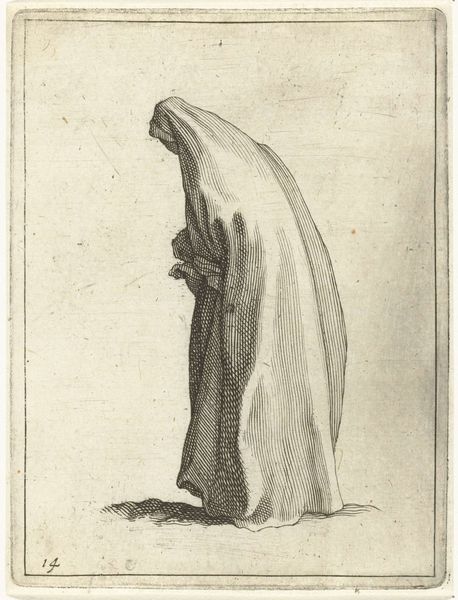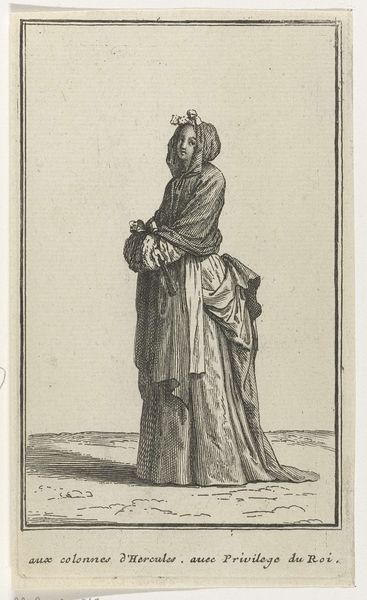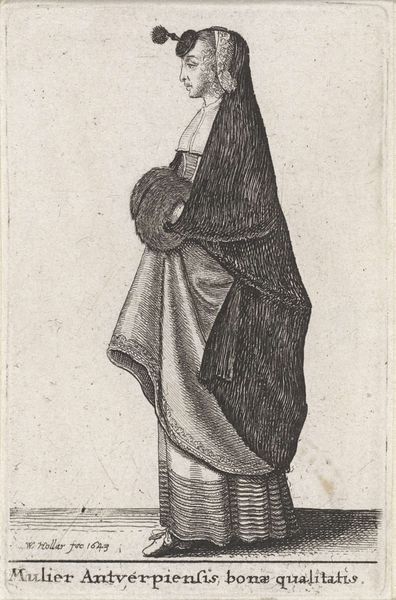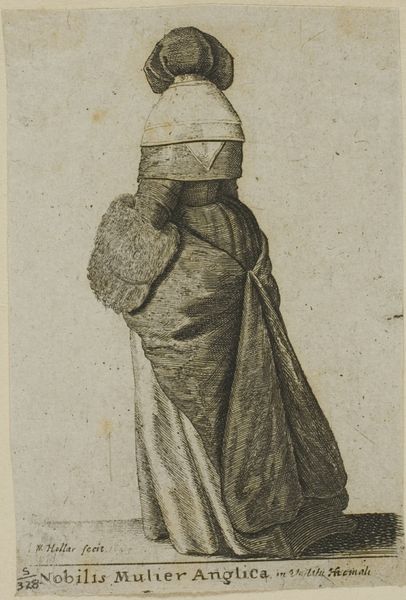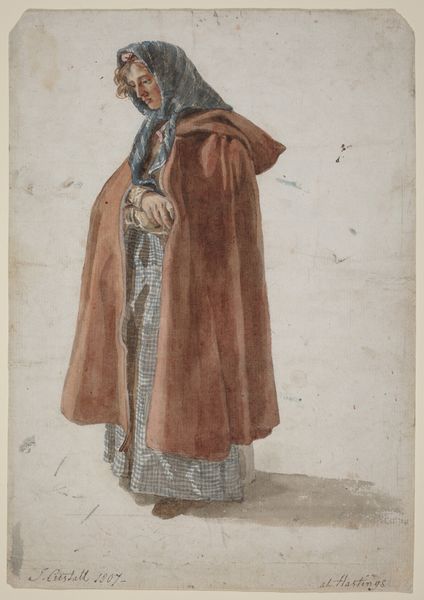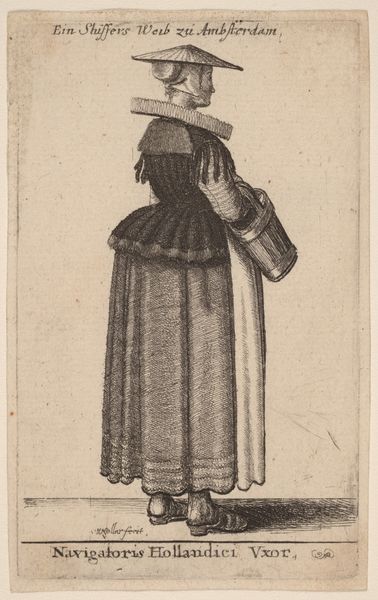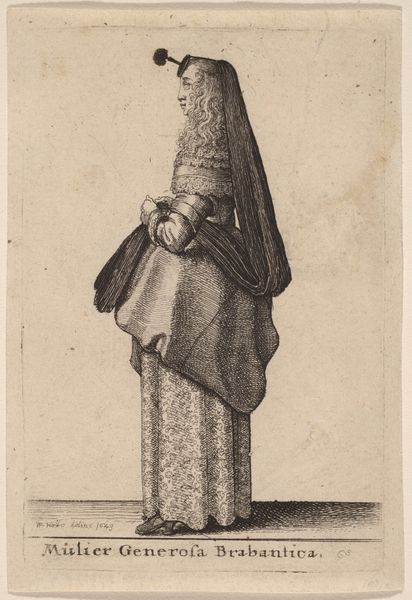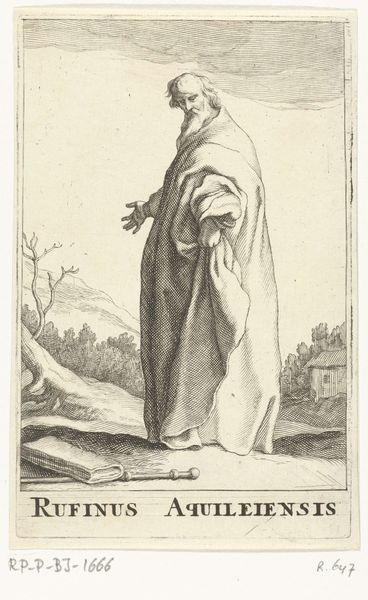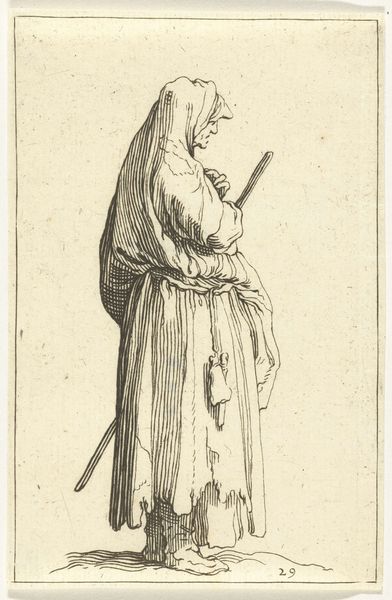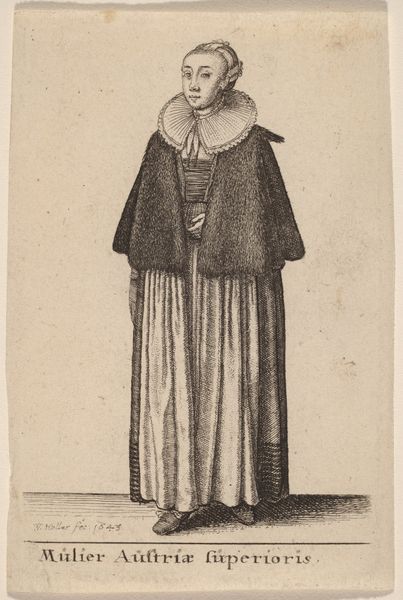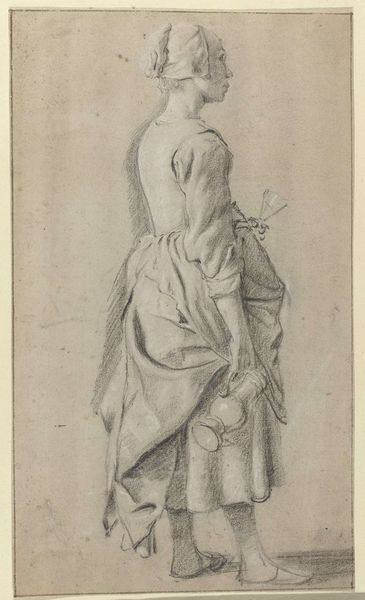
watercolor
#
portrait
#
baroque
#
watercolor
#
watercolour illustration
#
genre-painting
#
watercolor
Dimensions: height 143 mm, width 95 mm
Copyright: Rijks Museum: Open Domain
Curator: Immediately, I'm struck by the sombre mood—it feels muted and withdrawn. The grey mantle seems to swallow her whole. Editor: Indeed. We’re looking at "Standing Lady with a Gray Mantle" by Charles de Stoppelaer, likely created sometime between 1703 and 1738. It's a portrait executed in watercolor, and it's interesting how the style harkens back to Baroque conventions while also capturing everyday life in that period. Curator: The draping of the mantle is quite masterful. It both conceals and reveals—note how her hands are clasped tightly, and how only her face emerges from the hood. This gesture creates a sense of contained emotion, of secrets perhaps. Editor: I agree. The figure seems shrouded not just in fabric, but in societal expectations or perhaps a personal narrative of concealment. Such garb could point to any number of symbolic associations - widowhood, modesty, or even a religious habit. The use of grey, after all, tends to subdue, especially in relation to the stark whites that would mark religious figures during that time. Curator: You're right; gray rarely signifies the holy or virtuous outright. It would be interesting to delve deeper into whether grey carried particular socio-political meaning during this period of Dutch genre-painting and portraiture. Was it perhaps a symbol of a specific class? Editor: Precisely. We see it, primarily, in the portrayal of common people or as underpainting that forms other subjects. As it regards color psychology, it certainly embodies themes of neutrality and reserve, doesn’t it? Think of the woman’s gaze as if she is resigned, or perhaps determined… the visual iconography allows both realities to breathe and find new insight as they're observed across eras. Curator: It makes you think about the hidden histories contained within such simple portraits. Thank you; it gave me new eyes. Editor: It’s through that continual questioning, after all, that an object may continue speaking, in our histories, within ourselves.
Comments
No comments
Be the first to comment and join the conversation on the ultimate creative platform.
